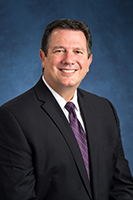By Raul Pereda, President and CEO of PW Power Systems, Inc. (PWPS), a provider of energy solutions for the power generation and mechanical drive industries (www.pwps.com)
As the world tackles the challenge of reducing carbon emissions, there is a big opportunity for new technologies that can help meet global energy needs in more environmentally sustainable ways.
And given that 25 percent of global greenhouse gas emissions come from electricity and heat production, making this the single largest source[1], a global push is on to adopt renewable-energy alternatives to fossil fuels – particularly coal, whose burning produces more greenhouse gases and other pollutants than any other energy source.
Concurrently, global demand for energy continues to grow, propelled by the rising aspirations of the emerging-market nations and driven at a pace that wind, solar, and other alternative energy sources can simply not meet.
Although the costs of wind turbines and solar panels continue to decrease, big installations that could replace some conventional power plants take considerable time and money to build. Even if there were enough wind and solar capacity, the need remains for conventional power generation as backup for the periods when the sun is down, winds are calm, and storage batteries are not sufficient to maintain a steady and adequate flow of electrical current.
In many parts of the world, meanwhile, government subsidies to support alternative energy are a big reason why renewables seem more cost effective than they really are. Energy economics are not necessarily at odds with environmental goals.
One of the biggest reasons is the U.S. renaissance in oil and natural gas production, largely a result of production from shale rock formations. By the 2030s, the United States is expected to produce more than 30 million barrels of oil and gas a day mainly because of production from shale rock formations according to the latest World Energy Outlook from the International Energy Agency.[2] That would be 50 percent more than any other country has ever produced in a single year.
That’s fortunate for the U.S. economy and for the energy-hungry world, because oil and gas will remain necessary to meet the world’s growing energy demands in coming decades. Fossil fuels are an important part of the energy mix along with renewables.
The challenge for public utilities and other power producers is to operate cleanly and efficiently. Natural gas is already a relatively low-carbon fuel and, thanks to advances in turbine technologies, is becoming cleaner and more efficient than ever. As more of the world’s coal-fired plants switch to natural gas as a fuel source, carbon emissions from electricity generation are falling even as the production of power increases to meet global demand.
Energy efficiency also depends on the smart allocation, integration, and distribution of electricity across the grid. Demand requires grid operators to nimbly juggle wind, solar, and other alternative-energies with conventional power sources and apply digital technologies to manage real time allocation of energy to ensure steady, reliable power to businesses and households.
Using software systems and networks to remotely monitor and troubleshoot power plants also means they can run at peak efficiency with predictive analysis enabling preventive maintenance.
At PW Power Systems, we continue to explore how gas-fired turbines can help utilities and private power producers generate electricity in more efficient, lower-carbon ways.
Modular turbine design is another factor in efficiency. Compact generators that can be shipped with all the necessary components in cargo containers to even the most remote parts of the world are helping emerging countries quickly achieve steady, reliable flows of electricity. Our turbines enable developing countries to avoid adopting the dirty, coal-burning technologies that have fouled the air of many developing cities. PWPS remote monitoring and diagnostic technology is especially well suited and necessary to keep power up and running in remote areas.
PW Power Systems is proud to join the global push to help the world meet its growing energy needs now, and in years to come, in an environmentally responsible way.

Raul Pereda
President and CEO, PW Power Systems, Inc.
President, Energy Services, Inc.
Raul Pereda has been with PW Power Systems since 2007 and was named President and CEO in April 2017.
Prior to his current role, Raul had responsibility for worldwide sales and marketing of all PWPS products and services as well as directing product and market expansion and business development activities. Raul also has overall responsibility for Energy Services, Inc., an engineering, procurement, and construction company affiliated with PWPS.
Before joining PWPS to sell FT8 units in Latin America, Raul held management positions within Pratt & Whitney’s military engine business including engineering and international business development.
Raul holds a Bachelor of Science Degree in Mechanical Engineering from the University of Miami, a Master of Business Administration from the Florida Institute of Technology, and is a graduate of the DoD’s Defense Systems Management College. He and his wife reside in Glastonbury.
[1] https://www.epa.gov/ghgemissions/global-greenhouse-gas-emissions-data
[2] https://www.iea.org/weo2017/
In this episode, I sat down with Beejan Giga, Director | Partner and Caleb Emerson, Senior Results Manager at Carpedia International. We discussed the insights behind their recent Industry Today article, “Thinking Three Moves Ahead” and together we explored how manufacturers can plan more strategically, align with their suppliers, and build the operational discipline needed to support intentional, sustainable growth. It was a conversation packed with practical perspectives on navigating a fast-changing industry landscape.